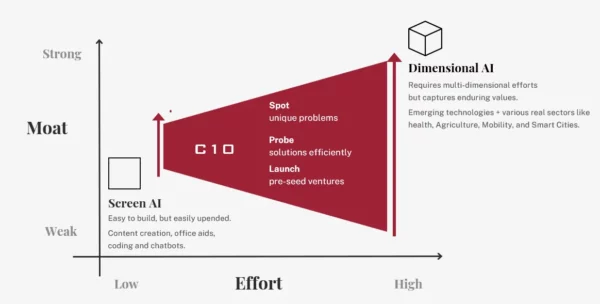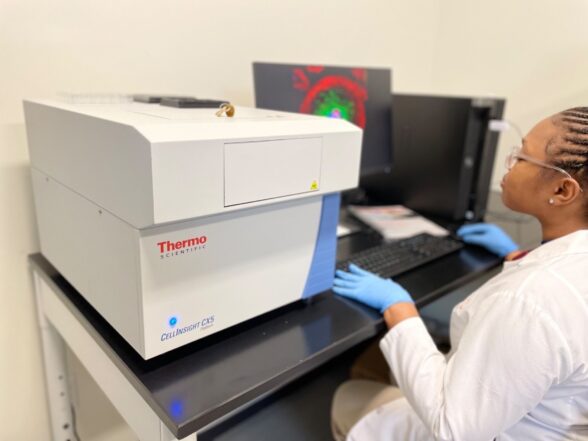This guest post was written by Kevin P. Martin, Jr., CPA and managing director of KPM.
Happy New Year!
As you’ve certainly heard by now, just about 10 days ago, President Trump signed into law H.R. 1, the “Tax Cuts and Jobs Act,” a sweeping tax reform package that promises to entirely change the tax landscape for you, your investors and your start-up or emerging growth company. Only time will tell whether the new law fosters or inhibits technology and innovation. What we do know already is that the law is going to challenge us in many ways, including how we balance, overall, lower tax rates with “doing the right thing” like investing in research and drugs for rare diseases.
I’m guessing whether you braved the cold on New Year’s Eve and met up with friends or whether you sat home, worked and binged on TV reruns and Chinese food, it’s likely that you pondered at least one tax reform question: What’s this mean for my company? Do I have the right entity structure? Am I now going to get the benefit of those NOL’s? Am I going to lose that foreign investor? How about R&D, is it in or is it out? And the list goes on and on…
There are lots and lots of business tax changes under the new tax law, including a reduction in the corporate tax rate to a flat 21% rate; a 5-year write-off period for R&D expenses; a limitation on the deduction for business interest, and an elimination of the domestic production activities deduction. I’m not going to hit every issue but I am going to highlight those hot topics for which CEO’s, CFO’s and entrepreneurs are stopping me in the halls and at community tables to discuss.
- The very good news is that the final version of the legislation has preserved the research and development (“R&D”) tax credit, which was made permanent in the Protecting Americans against Tax Hikes (“PATH”) Act of 2015. At the same time, we need to be mindful about how those credits are calculated and the ways in which the new tax law will directly or indirectly affect the taxpayers claiming those credits.
- Corporate tax rates have been reduced from a maximum rate of 35% to a flat 21% and the corporate alternative minimum tax (“AMT”) has been repealed. For tax years beginning after 2017 and before 2022, the AMT credit is refundable and can offset regular tax liability in an amount equal to 50% (100% for tax years beginning in 2021) of the excess of the minimum tax credit for the tax year over the amount of the credit allowable for the year against regular tax liability. That’s a mouthful but from a basic, R&D perspective, the AMT repeal removes the AMT restriction on corporations which has long prevented them from utilizing R&D tax credits to offset regular tax liability.
- Congress passed The Orphan Drug Act in 1983 to provide a better incentive for companies that are willing to embark on the development of orphan drugs (for diseases that affect fewer than 200,000 people). Instead of calculating the benefit for orphan drug development using the rules under IRC section 41 for the R&D tax credit, the Orphan Drug Act provided for a tax credit of 50% of clinical testing expenses (“CTEs”) under IRC Section 45C. Under the new law, the OD tax credit will be reduced to 25% of a company’s costs related to clinical trials for developing rare disease treatments. We are getting lots and lots of feedback here and what we are hearing is that patient groups fear that without the 50 percent tax credit, drug companies will cut back on developing drugs for rare diseases and focus on more common ailments. What we yet to fully understand is the new, optimal inflection point of lower rates, the lower OD credit, the R&D credit and the repeal of AMT that will continue to spur medical innovation.
- The new law has repealed the “domestic production activities deduction.” Section 199 may still be claimed for any open tax years beginning before January 1, 2018. Thinking out loud, taxpayers with production or service activities that are within the scope of Section 199 should consider claiming the Section 199 deduction for current years or possibly reviewing claims made in prior tax years and filing amended returns where applicable.
- Are you doing software development? For tax years beginning after December 31, 2021 taxpayers will be required to treat research or experimental expenditures as chargeable to a capital account and amortized over 5 years (and 15 years in the case of foreign research). Specified R&E expenditures subject to capitalization include costs for software development, but not costs for land or for depreciable or depletable property used in connection with the research or experimentation.
- Big capital needs? For property placed in service in tax years beginning after December 31, 2017, the maximum amount a taxpayer may expense under Code Section 179 is increased to $1 million, and the phase-out threshold is increased to $2.5 million.
- Except for companies with an average gross receipts of $25 million or less during a 3-year look-back period, for tax years beginning after December 31, 2017, businesses are subject to a disallowance of a deduction for “net interest expense” in excess of 30% of the business’s adjusted taxable income. The net interest expense disallowance is determined at the tax filer level. There is a special rule that applies to pass-through entitles, which requires the determination to be made at the entity level, for example, at the partnership level instead of the partner level. As you legally set up your new venture, depending on many variables, good entity selection is still ever so important. And to make it just a little tougher to digest, for tax years beginning after December 31, 2017 and before January 1, 2022, adjusted taxable income is computed without regard to deductions allowable for depreciation, amortization, or depletion and without the former Code Section 199 deduction as discussed above.
- Stock options…now I’ve got your attention! Let’s face it, options are a big part of compensation methodologies. The Act creates a new Section 83(i) and permits eligible employees of a private corporation to elect to delay federal income taxes arising on an option exercise or restricted stock unit (“RSU”) settlement for up to 5 years, subject to early acceleration if there are certain triggering events. “Excluded employees” who are ineligible from using this election include CEOs and CFOs, and individuals who are or were 1% owners or one of the top four, highest paid officers at any time during the last 10 years. There’s a lot more to it but the new rules apply to option exercises and RSU settlements after December 31, 2017.
- If you’re a start-up, there’s a good chance you’ve got some net operating losses (NOL’s) from business activities in a prior year. For NOLs arising in tax years ending after December 31, 2017, the two-year carryback and the special carryback provisions are repealed, but a two-year carryback applies in the case of certain losses incurred in the trade or business of farming (yes, we’ve got some farming tech). And here’s the kicker: For losses arising in tax years beginning after December 31, 2017, the NOL deduction is limited to 80% of taxable income (determined without regard to the deduction). Carryovers to other years are adjusted to take into account this limitation, and, generally, NOLs can be carried forward indefinitely.
- Got employees? For wages paid in tax years beginning after December 31, 2017, but not beginning after December 31, 2019, the new law allows businesses to claim a general business credit equal to 12.5% of the amount of wages paid to qualifying employees during any period in which such employees are on family and medical leave (FMLA) if the rate of payment is 50% of the wages normally paid to an employee. The credit is increased by 0.25 percentage points (but not above 25%) for each percentage point by which the rate of payment exceeds 50%.
- For amounts incurred or paid after December 31, 2017, deductions for entertainment expenses are disallowed, eliminating the subjective determination of whether such expenses are sufficiently business related; the current 50% limit on the deductibility of business meals is expanded to meals provided through an in-house cafeteria or otherwise on the premises of the employer; and deductions for employee transportation fringe benefits (e.g., parking and mass transit) are denied, but the exclusion from income for such benefits received by an employee is retained. In addition, no deduction is allowed for transportation expenses that are the equivalent of commuting for employees (e.g., between the employee’s home and the workplace), except as provided for the safety of the employee. What does this mean? Thou shalt host business meetings in coffee shops and thou shalt walk from your loft to work!
- There is a new 20% qualified business income deduction for certain owners of flow-through entities (such as partnerships, limited liability companies and S corporations) and sole proprietorships – through 2025. Lets just say, like life…it’s complicated.
- The dividends received deduction (“DRD”) has been reduced for companies owning significant equity in other companies. We’ve got a bunch of these types of companies. Currently, if ownership constitutes less than 20% or greater than 20%, but less than 80%, the deduction is equal to 70% and 80%, respectively. The new legislation reduces those deductions to 50% and 65%, respectively. This will affect dividend declaration policies made by corporations.
- The Code occasionally has provided various incentive programs aimed at encouraging economic growth and investment in distressed communities by providing Federal tax benefits to businesses located within designated boundaries. The new law provides temporary deferral of inclusion in gross income for capital gains reinvested in a “qualified opportunity fund” and the permanent exclusion of capital gains from the sale or exchange of an investment in the qualified opportunity fund.
Lastly, we work with a number of companies that have foreign investment or are wholly-owned by foreign entities. The new law contains a number of provisions that relate to foreign dividends, the expansion of the definition of “US shareholder,” base erosion anti-abuse tax (“BEATS”), denial of deductions relating to certain related party payments and limitations of income shifting through intangible property transfers (“transfer pricing”).
Now, I’m betting you wish you had one more drink on New Year’s Eve! Will the new tax law allow tech companies to spur innovation and meet their growth potential? We are still scratching our heads. Let’s face it, start-ups and early growth companies face unique challenges – they need big upfront investment, they incur operating losses in those early years, they aren’t getting the immediate benefit of a reduction in the corporate tax rate, they are tight on cash and often choose to compensate key team members through stock options and they are dependent on R&D to push forward their ideas.
There’s a lot going on under the new law and we are still working through the text ourselves, particularly the foreign investment provisions. There’s likely to be a technical corrections bill coming which should add some clarification, and likely lots more confusion. We’ve been working with companies like yours for over 50 years and we would be delighted to guide you through the new law and what you should be doing now…and later.
Kevin P. Martin, Jr. is the Managing Director of Kevin P. Martin & Associates, P.C, a Boston-based CPA and consulting firm specializing in start-up and early stage tech, biotech and life sciences companies. Kevin spends most of his time advising clients, growing companies, putting business ideas to work, giving lectures and can be reached always at kmartinjr@kpm-us.com.




